Country Loft Boosts Performance With Resilient Mechanical System
A high-performance building envelope and Mitsubishi Electric's ductless three-zone Zoned Comfort Solutions® system work together to provide comfort year-round.
Sponsored by Mitsubishi Electric
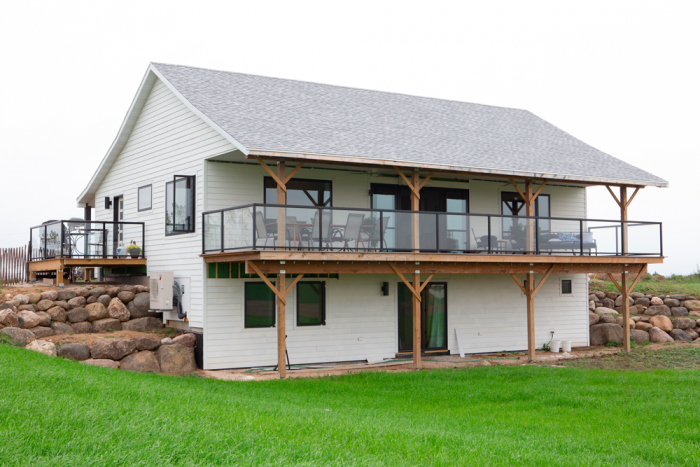
Each year, the Fine Homebuilding House serves as a full-scale demonstration of trending building styles, methods and materials. The 2021 home, completed over the summer in Madison, Wisconsin, exemplifies high-performance building and practicality while showcasing tasteful, functional design.
The 2,700-square-foot home merges its site’s rural landscape with architectural elements commonly seen in trendy urban lofts. This design decision pays homage to the former New York City residences of the home’s builder, Ian Schwandt of TDS Custom Construction. Dark, industrial, modern interior finishes combine with a farmhouse exterior and floor plan. Vaulted ceilings and elevation changes seamlessly complement the lot’s sloped topography. The result? A unique architectural style deemed “country loft.”
Combining Beauty with Function and Performance
Visual appeal distinguishes the home, but the systems and components providing smooth and efficient operation behind the scenes also deserve recognition. The project is also the personal home of Schwandt and his family, so the designer directly benefits from the year-round comfort and low utility costs achieved with the high-performance building envelope and efficient mechanical systems.
The home is conditioned using a ductless multi-zone system from Mitsubishi Electric, installed by The Thielmann Group of nearby Burlington, Wisconsin. As Mitsubishi Electric Elite Diamond Contractors, the contracting team was well-versed in the heat pump options available to Schwandt and provided recommendations tailored to the home’s goals for design, efficiency and comfort control. The finalized system includes Deluxe Wall-mounted Indoor Units, an MHK2 wireless Wall-mounted Controller and WiFi interfaces. The zoning capabilities allow the Schwandt family to set distinct comfort zones within the home. If the loft needs to be kept warmer than the main living area, or the bedrooms feel too warm, they’re able to individually control each indoor unit’s airflow and temperature settings.
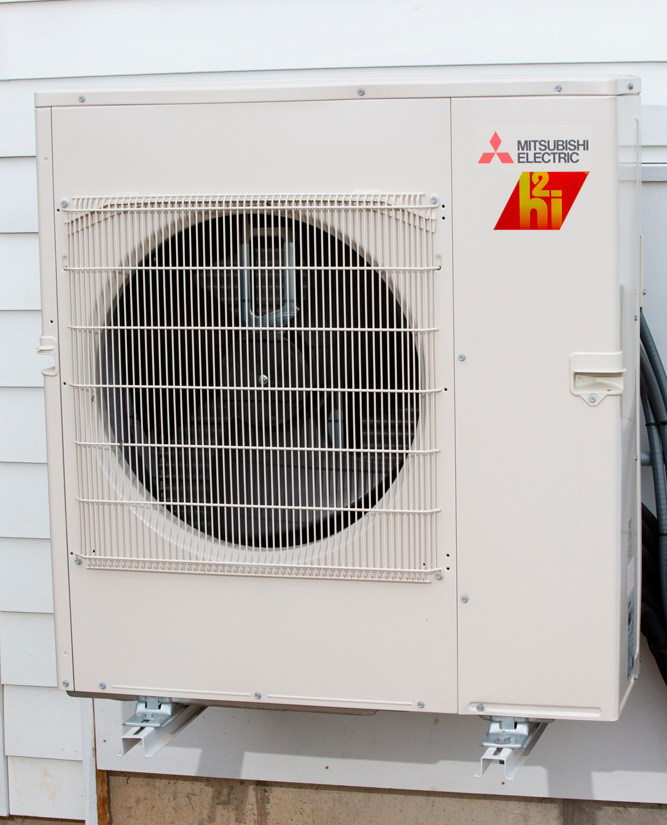
No matter their setpoints, all three comfort zones connect back to one, 2.5-ton MXZ heat pump outdoor unit equipped with Hyper-Heating INVERTER® (H2i®) technology. This technology allows the unit to operate at 100 percent capacity in outdoor ambient temperatures as low as 5° F, boosting the home’s resiliency through Wisconsin’s notoriously cold winters. The system is supplemented by auxiliary baseboard heaters in the main living area and a combination boiler provides on-demand hot water for the home’s less insulated areas, the basement and garage. The home’s controls system determines when the auxiliary heating energizes.
Coated for Resiliency
The Schwandt home uses MSZ-FS indoor units, a recently introduced model from Mitsubishi Electric featuring a patented, industry-first Dual Barrier Coating. Applied inside a unit’s heat exchangers, vanes, air duct and blower wheels, the Dual Barrier Coating combats the build-up of potentially aggravating airborne particles. This feature’s a game-changer in terms of system maintenance and helps satisfy the critical homeowner demand for energy efficiency, high-performance and simplified maintenance, all in one package.
As a professional builder, Schwandt is attuned to the growing demand for resiliency and durability. His commitment to keeping up with the changing built environment and its standards inspired him to build his home to meet Passive House standards for air tightness and energy efficiency. Schwandt and his family, along with any future homeowners of the Fine Homebuilding House, will live in an architecturally inspiring home built for exceptional performance.
To see the house and hear more from Schwandt, along with Mike Schaefer, Mitsubishi Electric performance construction manager, watch the Fine Homebuilding video.
To learn more about all-electric, multi-split systems from Mitsubishi Electric, visit MitsubishiComfort.com.

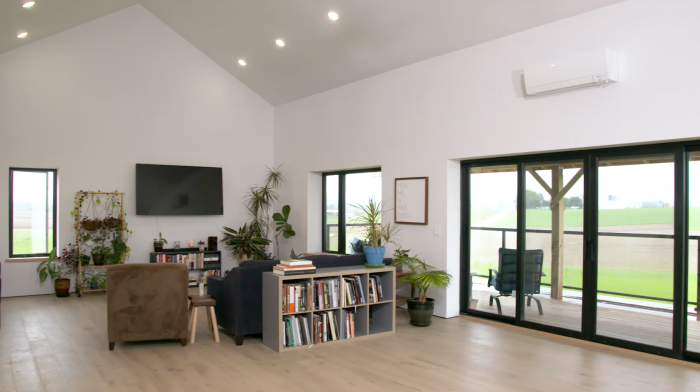
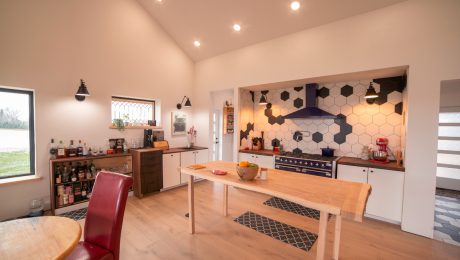
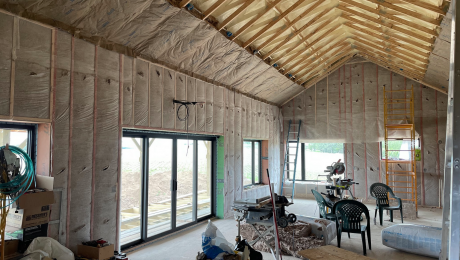
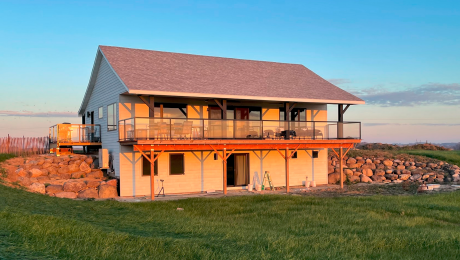
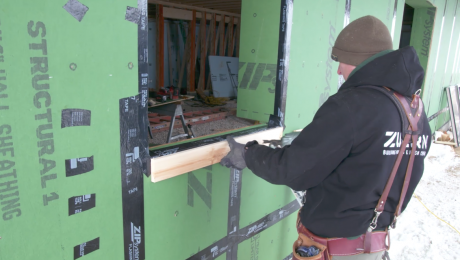


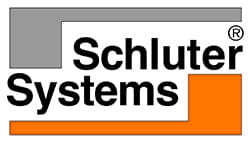



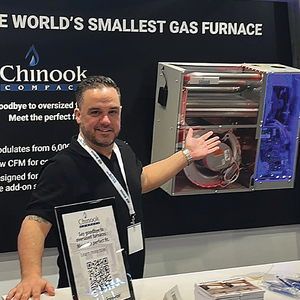









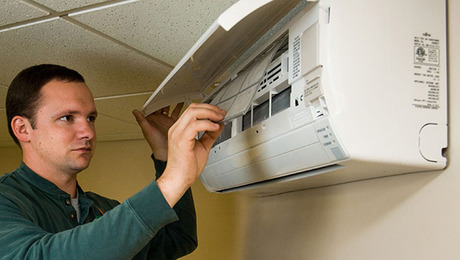
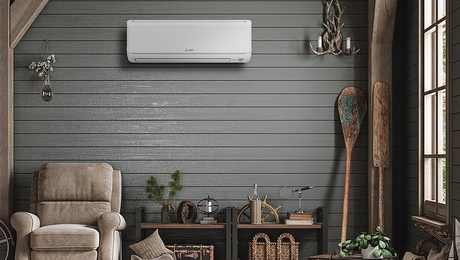












View Comments
Speaking as a recent customer of a Mitsubishi mini-split system, I have to say "I like it, _but_… there are pitfalls to be aware of".
The most important issue, which my installers failed to make me aware of, is that the temperature setting on the remote control may lie to you. Apparently, the temperature set with these is then measured at the head, not in the room. As a result, the room temperature may be significantly different from what you have requested. The fancier heads, with their IR scanner, do somewhat better than this but I am told that even they may struggle. The recommended solution is to make sure that you have installed the Wi-Fi transceiver, which then lets you get separate thermostats which can speak to this, taking control away from the internal thermostat and measuring temperature in the room. This is a significant up charge over the basic system.
The alternative solution is to run it "by feel", treating the temperature setting on the remote more as a power setting, and adjusting it up and down until the room feels right rather than taking the temperature setting at face value.
A third solution, which I expect I will use, is to homebrew my own thermostats out of microcontrollers and have them send commands to the heads via the same infrared channel that the remotes use. This isn't quite as good as the Wi-Fi solution, but it should be much, much less expensive and give nearly the same results.
If the installers had informed me of these facts back when I was pricing the system, I would probably have included the Wi-Fi units in the purchase. If they had informed me if this when they installed the system, I would at least have had my expectations set correctly. As it stands, I am slightly annoyed that neither they, nor mitsubishi, saw fit to give me these facts. I strongly urge you, before spec'ing one of these units, to understand both its strengths and its limitations and communicate those clearly to the customer so expectations are set properly.
Having said that, a mini split is certainly one of the best ways to put central air conditioning into an older house, and it's probably the best option for electric heat. Now that more and more communities are discouraging heating with fossil fuel, you really do want to learn how to work with these. Just make sure you know what you're getting yourself into.
(Oh, and Mitsubishi? If you disagree with any of this, I would be delighted to put you in touch with my installer so we can make sure we're all on the same page I'd _like_ to be more enthusiastic about the product!)
Hi Loxmyth, FHB Special Projects Editor here. Thanks for your comment. We've connected with Mitsubishi and they've passed along the following response and information to get in contact with you and your installer:
"Thanks for being our customer and sharing your feedback. Your experience absolutely speaks to the importance of setting proper expectations and informing homeowners of their options. I want to clarify a few points here and take you up on your offer. Could you send me a message with your contact info and your installer’s details? Here’s my email: [email protected].
Now, let’s talk controllers.
By design, the handheld remote controller displays the set point rather than the current temperature. The handheld could wind up anywhere, so as you noted, the system uses a stationary return air sensor in the ductless head to detect the temperature. Some homeowners are satisfied with a handheld made to adjust set points only, but for everyone else we offer several different controller options able to display the space temperature and the set point. You’re clearly in the “everyone else” category and should’ve been presented upfront with options like our kumo touch (MHK2) wireless wall controller or wired controllers like the Simple MA and Touch MA, which let homeowners choose whether to use the head’s default room temperature sensor or a sensor in the controller.
We agree with you on mini-splits being one of the best ways to add central air conditioning without burning fossil fuels. Delivering experiences so homeowners like you have unreserved enthusiasm for our products is how we’ll help more homeowners agree with both of us. So, let’s talk and get on the same page. Hope to hear from you soon! - Mike Schaefer, Mitsubishi Electric performance construction manager"